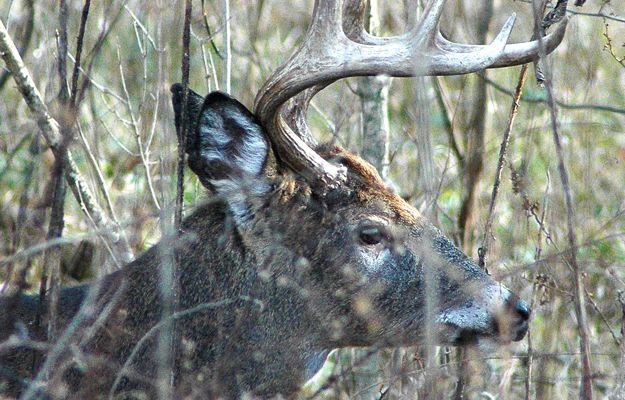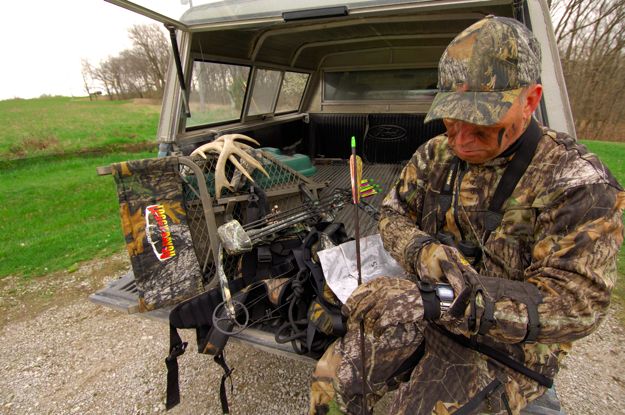
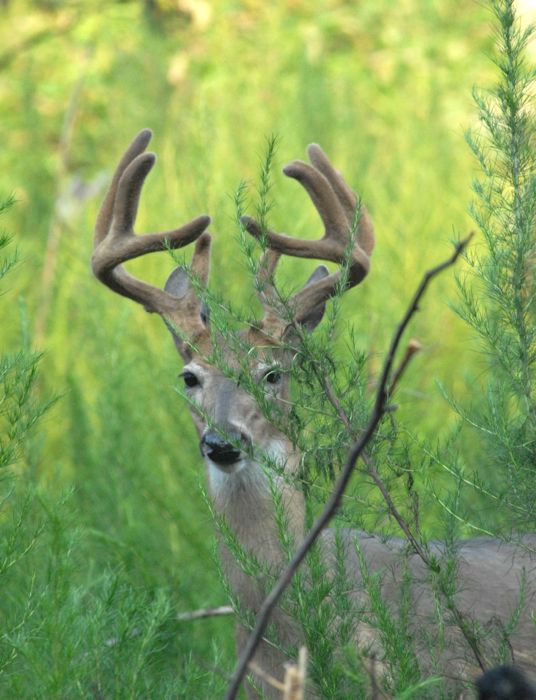 Editor’s Note: Jeremy Seymour, originally from Louisville, Georgia, has lived in Greenville, South Carolina for the last 20 years. Just completing his ninth season as a Mossy Oak pro, he's a competitive shooter and hunter for PSE archery, works fulltime for the Greenville Fire Department and is a part-time bow technician and archery instructor at Saluda River Archery in Piedmont, South Carolina. During deer season, Seymour prefers to wear Mossy Oak Break-Up Infinity, since he hunts in shadows and shade, and in turkey season, he likes Mossy Oak Obsession.
Editor’s Note: Jeremy Seymour, originally from Louisville, Georgia, has lived in Greenville, South Carolina for the last 20 years. Just completing his ninth season as a Mossy Oak pro, he's a competitive shooter and hunter for PSE archery, works fulltime for the Greenville Fire Department and is a part-time bow technician and archery instructor at Saluda River Archery in Piedmont, South Carolina. During deer season, Seymour prefers to wear Mossy Oak Break-Up Infinity, since he hunts in shadows and shade, and in turkey season, he likes Mossy Oak Obsession.
I'm often asked, “If you arrow a deer in really-hot weather (90 to over 100 degrees), how do you follow the blood trail through thick foliage?” This is a really good question. As I’ve mentioned earlier, I’ll often be hunting over a persimmon tree or muscadine vines out in a pine plantation. Not only does the deer’s blood dry quickly in the hot weather, but it often falls through the pine needles. When you arrow a nice velvet-antlered buck, you have a real conflict, because you want to give the deer a chance to lie down after the shot. However, you also hope to recover the deer quickly before the blood trail dries up. Then you can field dress the deer and get the meat out of the woods quickly and into a cooler or an ice chest.
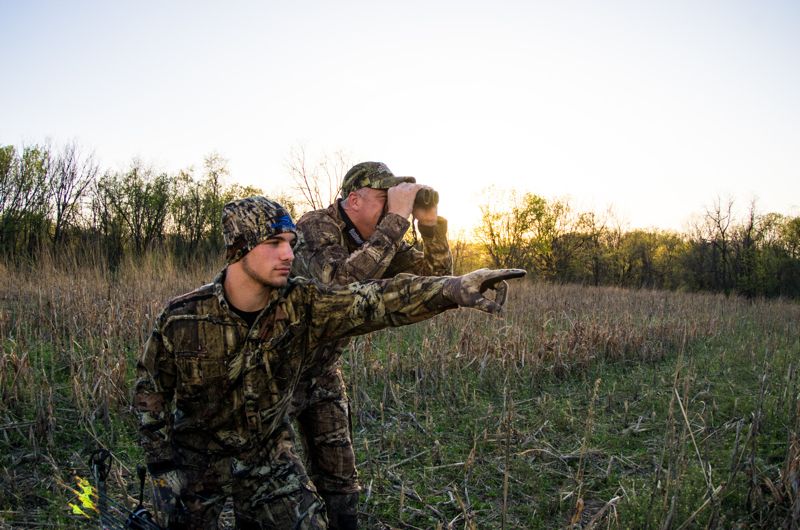 When the blood starts drying up, it’s not as shiny or as easy to see. For this reason, you need to watch the direction the deer runs after the shot and need to have a good knowledge of the place you’re hunting. When injured, deer usually will go back toward their bedding areas or to water. So, if you know where the deer are bedding, and you know where the closest water is located, even if you lose the blood trail, you have a pretty good idea where you need to look to find your deer.
When the blood starts drying up, it’s not as shiny or as easy to see. For this reason, you need to watch the direction the deer runs after the shot and need to have a good knowledge of the place you’re hunting. When injured, deer usually will go back toward their bedding areas or to water. So, if you know where the deer are bedding, and you know where the closest water is located, even if you lose the blood trail, you have a pretty good idea where you need to look to find your deer.
If I'm having trouble blood trailing a deer, I have a dog that I use to help me find the wounded deer. I believe that a good blood trailing dog is an asset to a deer hunter, especially when the weather is hot, and your deer moves into thick cover. I have two different dogs I use to blood trail. One is a black-and-tan coon hound with a really-good nose that loves to work a blood trail. I believe the Good Lord built the hound with hunting in mind. Most hounds have big floppy ears. I believe those ears are not only for hearing, but I think they help channel the scent of the game to the nose of the hound. Before I got my black and tan, I had a redbone hound. He was a really good dog, but I lost him to cancer. I also have a beagle hound that blood trails. I’ve found these dogs to be very dependable for finding arrowed deer in hot weather. They’ve taught me a lot too about how to locate wounded deer.
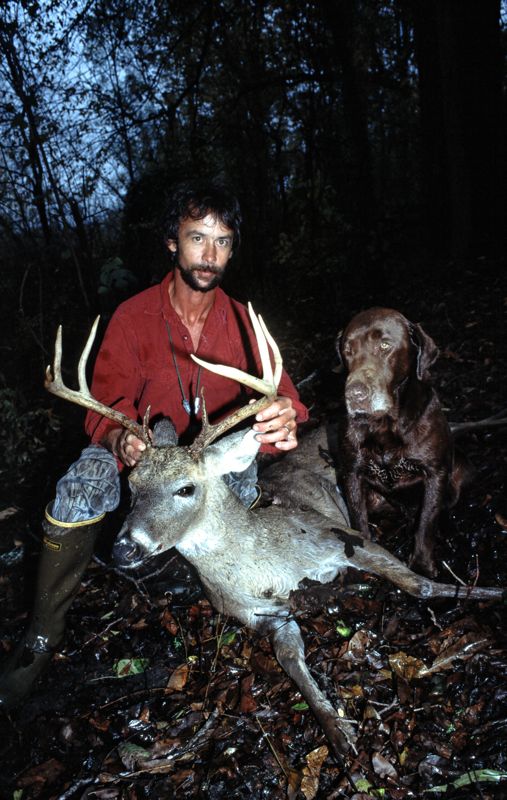 One time, I followed a blood trail down on my hands and knees. When I couldn’t find any more blood, I went back to the house and got my dog. I put the dog on the blood trail. When he reached the point where I’d lost the blood trail, he went in a totally-different direction. At first the dog’s leaving the blood trail irritated me, because I thought I knew which way the deer went, but the dog actually smelled the trail. Once I followed the dog, I saw that where the blood stopped, the deer had made a 90-degree turn and run in a semicircle. The dog found the deer. I'm at the point now that I don’t even question the dog. I’ve had other times where the blood’s run out, and the deer’s again turned 90 degrees. The dog before has found that deer dropped not 30 yards from where I had shot, however, he may have run 80 yards in a semicircle to get back to that spot. Sometimes, when the blood runs out, I think the dog can smell the deer where the deer is on the ground. Instead of following the trail, they go straight to the deer. I really believe that good blood trailing dogs can save a lot of deer that hunters otherwise may lose.
One time, I followed a blood trail down on my hands and knees. When I couldn’t find any more blood, I went back to the house and got my dog. I put the dog on the blood trail. When he reached the point where I’d lost the blood trail, he went in a totally-different direction. At first the dog’s leaving the blood trail irritated me, because I thought I knew which way the deer went, but the dog actually smelled the trail. Once I followed the dog, I saw that where the blood stopped, the deer had made a 90-degree turn and run in a semicircle. The dog found the deer. I'm at the point now that I don’t even question the dog. I’ve had other times where the blood’s run out, and the deer’s again turned 90 degrees. The dog before has found that deer dropped not 30 yards from where I had shot, however, he may have run 80 yards in a semicircle to get back to that spot. Sometimes, when the blood runs out, I think the dog can smell the deer where the deer is on the ground. Instead of following the trail, they go straight to the deer. I really believe that good blood trailing dogs can save a lot of deer that hunters otherwise may lose.
For more information on early-season deer hunting in South Carolina, go to www.dnr.sc.gov.
Yesterday: Finding Deer When the Weather Sizzles
Tomorrow: Best South Carolina Buck Deer














